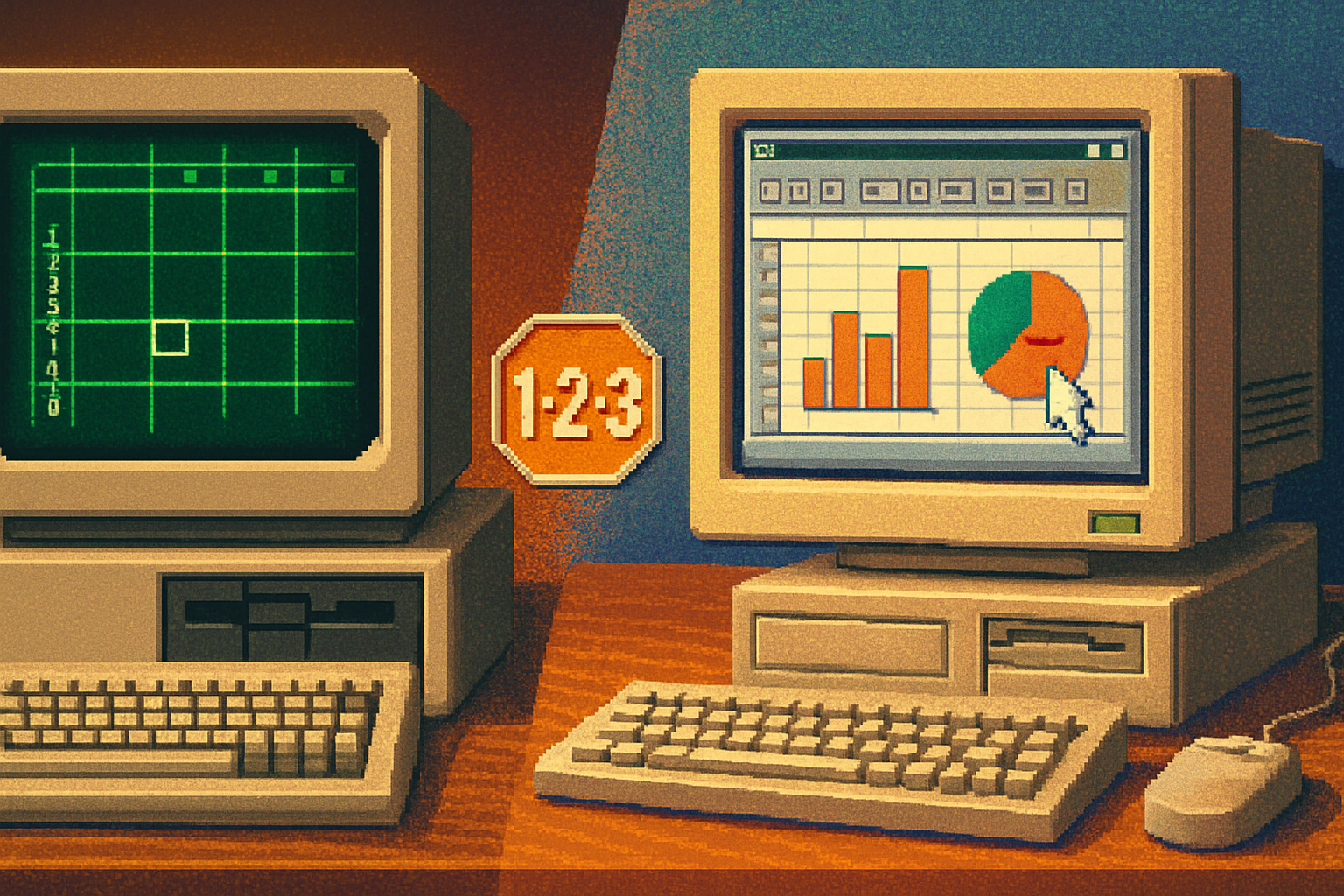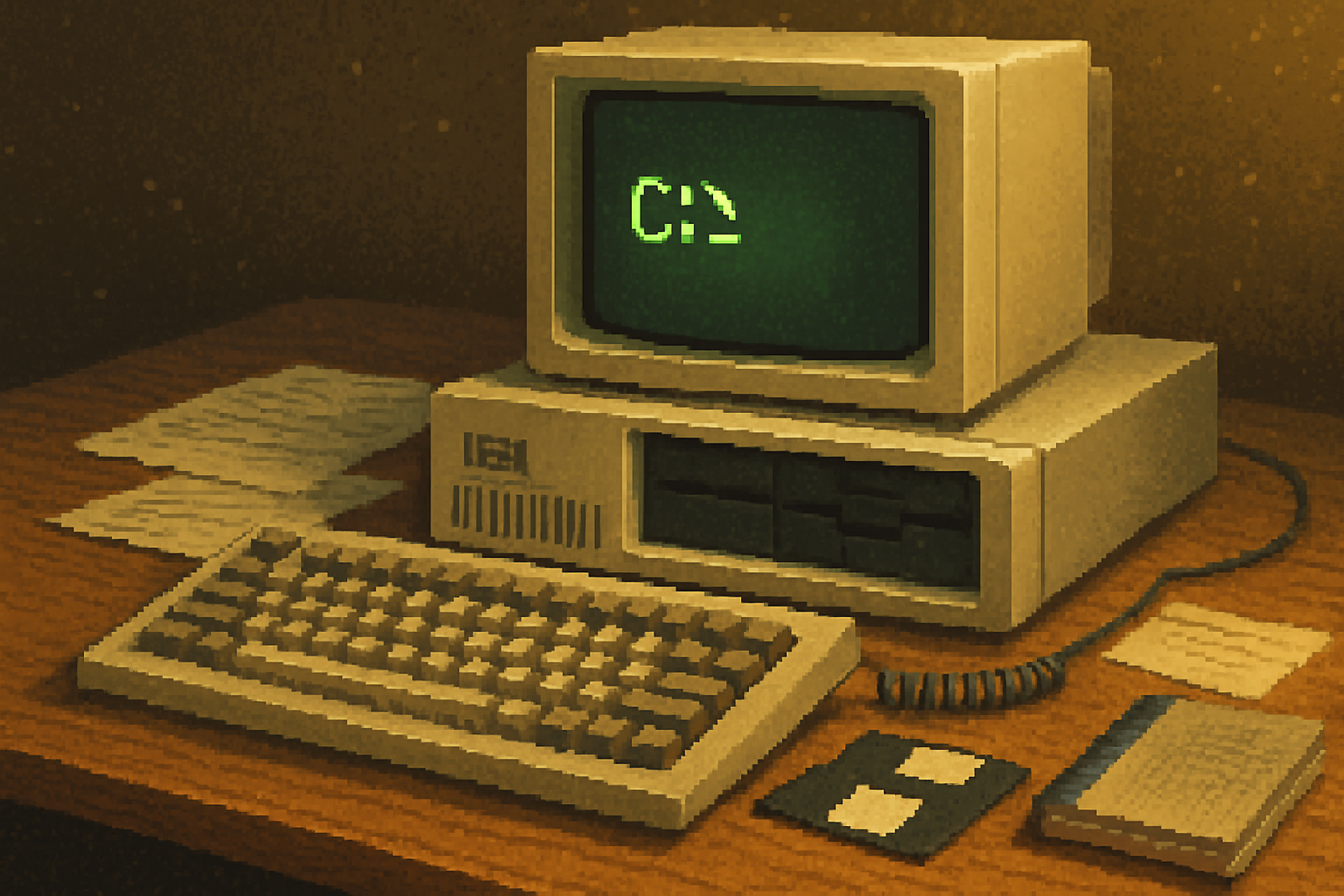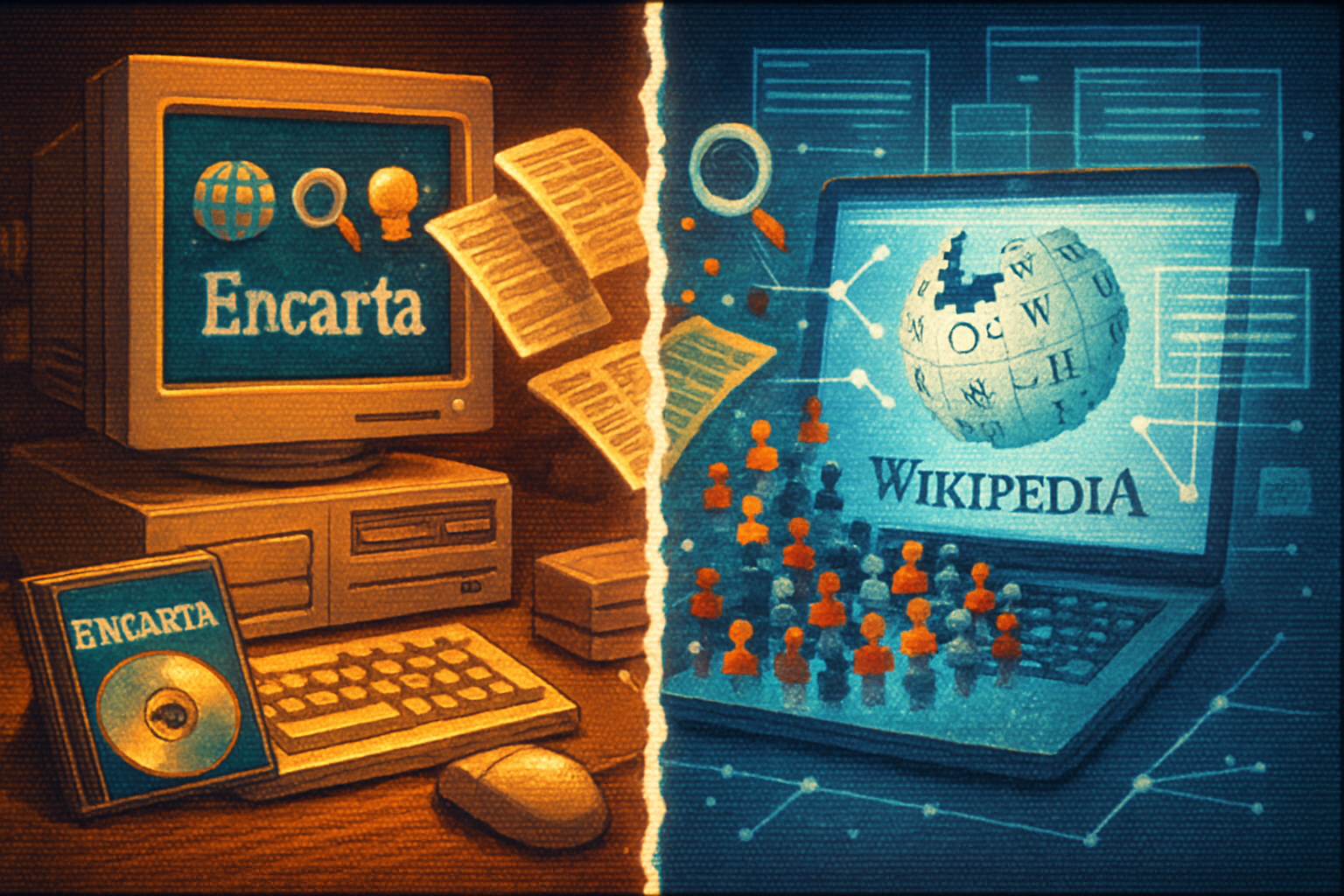· retrotech · 7 min read
Revisiting Lotus 1-2-3: The Spreadsheet That Changed Everything
Lotus 1-2-3 arrived in 1983 and transformed spreadsheets from a niche productivity tool into a business-essential application. This article traces its technical innovations, market consequences, and lasting influence on modern spreadsheet software and broader computing.

Introduction
In the early 1980s, spreadsheets were still a nascent idea. VisiCalc had proven the concept and created the market, but it was Lotus 1-2-3 that turned spreadsheets into a business phenomenon. Launched in 1983 by Lotus Development, 1-2-3 combined raw speed, integrated graphing, rudimentary database features and programmable macros into a single, keyboard-driven package that ran well on the IBM PC. The result was an application that not only dominated office automation for a decade but also shaped how people thought about end-user computing.
This article revisits Lotus 1-2-3: what it introduced, why it mattered, and how its ideas echo in modern spreadsheet tools like Microsoft Excel and Google Sheets.
The state of play before Lotus 1-2-3
VisiCalc (late 1970s) is rightly credited with inventing the electronic spreadsheet as a killer app for microcomputers; it showed managers they could replace manual ledgers with interactive, recalculating models. But VisiCalc had limits: it was slow on larger data sets, lacked built-in charting, and offered limited programmability.
When Lotus 1-2-3 arrived in 1983 it addressed many of those shortcomings at once. The company behind it - Lotus Development, co-founded by Mitch Kapor and with key technical work by Jonathan Sachs - delivered a product engineered for the constraints of early PCs while offering features that anticipated how business users actually worked.
References: see the histories of Lotus 1-2-3 and VisiCalc.
What made Lotus 1-2-3 innovative
Lotus 1-2-3 was not just a faster VisiCalc clone. Several design and engineering choices made it stand out:
Performance-first engineering - Lotus 1-2-3 was written in optimized code for DOS and the IBM PC’s hardware, which made recalculations and navigation much faster than competitors on the same machines. That speed mattered for larger worksheets and complex models.
Integration of spreadsheet, charting and rudimentary database operations - Rather than forcing users to switch applications for graphing or data manipulation, 1-2-3 bundled those capabilities. This integration reduced friction and made it possible to build reports end-to-end in one package.
Macro and automation support - Lotus introduced programmable macros that automated repetitive tasks and enabled complex workflows. This was an early, powerful form of end-user programming that let business users extend the application to their needs.
Command-centric, keyboard-optimized UI - In an era before mice and graphical interfaces were widespread, 1-2-3’s keyboard-driven commands (and memorable command keys) made data entry and model navigation fast for experienced users.
File and worksheet organization - Features such as multiple worksheets per file, print formatting controls, and modest database-like functions supported the kinds of multi-sheet financial models that analysts needed.
These features together created a step-change in what spreadsheets could do and how quickly professionals could do it.
For a deeper look at Lotus’s technical and business rise, see the Computer History Museum collection and archival notes on spreadsheet history.
Business impact: adoption and cultural change
Lotus 1-2-3 accomplished two things that amplified each other: it convinced businesses the IBM PC was a viable platform for serious work, and it gave end users a tool that let them build models, forecasts and reports faster than before.
Driving PC purchases - Companies bought PCs to run Lotus 1-2-3. The application became a de facto reason to invest in personal computers and raised expectations of what office software should deliver.
Democratizing analysis - Accountants, financial analysts and managers could build complex models themselves rather than rely exclusively on dedicated programming teams. That shift helped fuel the broader movement of “end-user computing.”
Creating an ecosystem - Because 1-2-3 files stored the business logic, many organizations standardized on Lotus file formats and workflows. Consulting firms and software vendors produced templates, macros and add-ins tailored to Lotus users.
The market dominance that followed also made Lotus a major software company almost overnight, but dominance proved hard to sustain as platforms and interfaces evolved.
The technical legacy in modern spreadsheets
Many conventions and expectations in modern spreadsheet software can trace lineage back to Lotus 1-2-3-either directly or as reactions to what it introduced.
Functional spreadsheet model - The concept of cell-based formulas, immediate recalculation and grid-based modeling are core to all spreadsheet tools that followed.
Automation and macros - Lotus’s macro support showed both the power and peril of embedded end-user programs in spreadsheets. Microsoft eventually built a much more sophisticated automation environment (VBA) in Excel, but the idea that spreadsheets are programmable objects started with early macro systems such as Lotus’s.
Integrated visualization - 1-2-3’s built-in charting foreshadowed the importance of integrated visualization - today’s Excel charting and Google Sheets charts follow the philosophy that data and its graphical representation should live together.
Keyboard-centric efficiency and shortcuts - Even in graphical spreadsheet environments, many keyboard conventions were designed to preserve the speed that 1-2-3 users appreciated.
File and model portability issues - As with any dominant format, Lotus-created file formats and behaviors shaped compatibility issues, interoperability debates and litigation related to program interfaces and look-and-feel. These debates influenced how later vendors approached compatibility and standards.
For an overview of how spreadsheets evolved into powerful analysis and BI tools, compare Lotus’s role with the later growth of Microsoft Excel.
Lessons from 1-2-3’s rise-and its fall
Lotus 1-2-3’s history carries several lessons that remain relevant for software designers and product managers:
Solve a real pain with great performance - Lotus succeeded because it made spreadsheets faster and more capable than the incumbent, and because speed mattered to users.
Integration reduces friction - Combining spreadsheet, charts and basic data tools in one product created a powerful one-stop workflow. Modern SaaS suites echo this integration strategy.
Design for extensibility - but manage risk - Macros extended users’ power but also introduced complexity and risk (bugs, errors, maintainability issues). Today’s spreadsheet ecosystems still wrestle with balancing user programmability and safety.
Platform transitions can be fatal - The shift from DOS to graphical Windows environments and later to collaborative cloud-native apps rewarded vendors who adapted quickly. Lotus’s slower transition to GUI and networked, collaborative paradigms allowed competitors to gain ground.
User habits persist - Many keyboard shortcuts, formula conventions and interaction patterns established in early spreadsheets persisted long after the original product faded.
The darker side: errors, governance and the spreadsheet as code
One of the underappreciated impacts of spreadsheets is their role as an informal programming environment. Studies since the 1990s have documented how spreadsheets frequently contain errors and how these errors can propagate into business decisions (Raymond Panko’s work is a good entry point).
Lotus 1-2-3 helped normalize building complex, mission-critical logic inside spreadsheet files. That democratization was powerful but it also created systemic risks: fragile models, undocumented macros, and difficulty auditing calculations. Addressing these risks has driven features like version control, auditing tools, formula inspection, and safer scripting models in modern spreadsheet platforms.
From Lotus 1-2-3 to cloud-native collaboration
Fast-forward to today and spreadsheets are collaborative, cloud-hosted, often integrated with APIs and other apps. Google Sheets, Excel Online and various BI tools inherit architectural concepts first popularized by desktop products like 1-2-3 (grid model, formulas, charts) while adding real-time collaboration, permissions, and programmatic APIs.
The philosophical throughline is that spreadsheets remain the simplest, most flexible general-purpose business programming environment - which is exactly what Lotus 1-2-3 unlocked for a generation of users.
Why revisit Lotus now?
Revisiting Lotus 1-2-3 is useful not just as nostalgia but as a way to understand how much of our modern productivity stack grew from design decisions made under tight technical constraints. It highlights how software can alter hardware markets, how products can create new job practices (end-user programming), and how early design patterns can persist for decades.
If anything, the 1-2-3 story is a reminder that software that fits into real workflows, is fast and integrated, and exposes useful extensibility will shape broad adoption - but vendors must also evolve interfaces, safety and collaboration paradigms as platforms change.
Further reading
- Lotus 1-2-3 (historical overview) - Wikipedia
- VisiCalc - Wikipedia
- Microsoft Excel - Wikipedia
- What We Know About Spreadsheet Errors (Raymond R. Panko) - University of Hawaii paper
- Computer History Museum - archival collections on early productivity software: computerhistory.org



